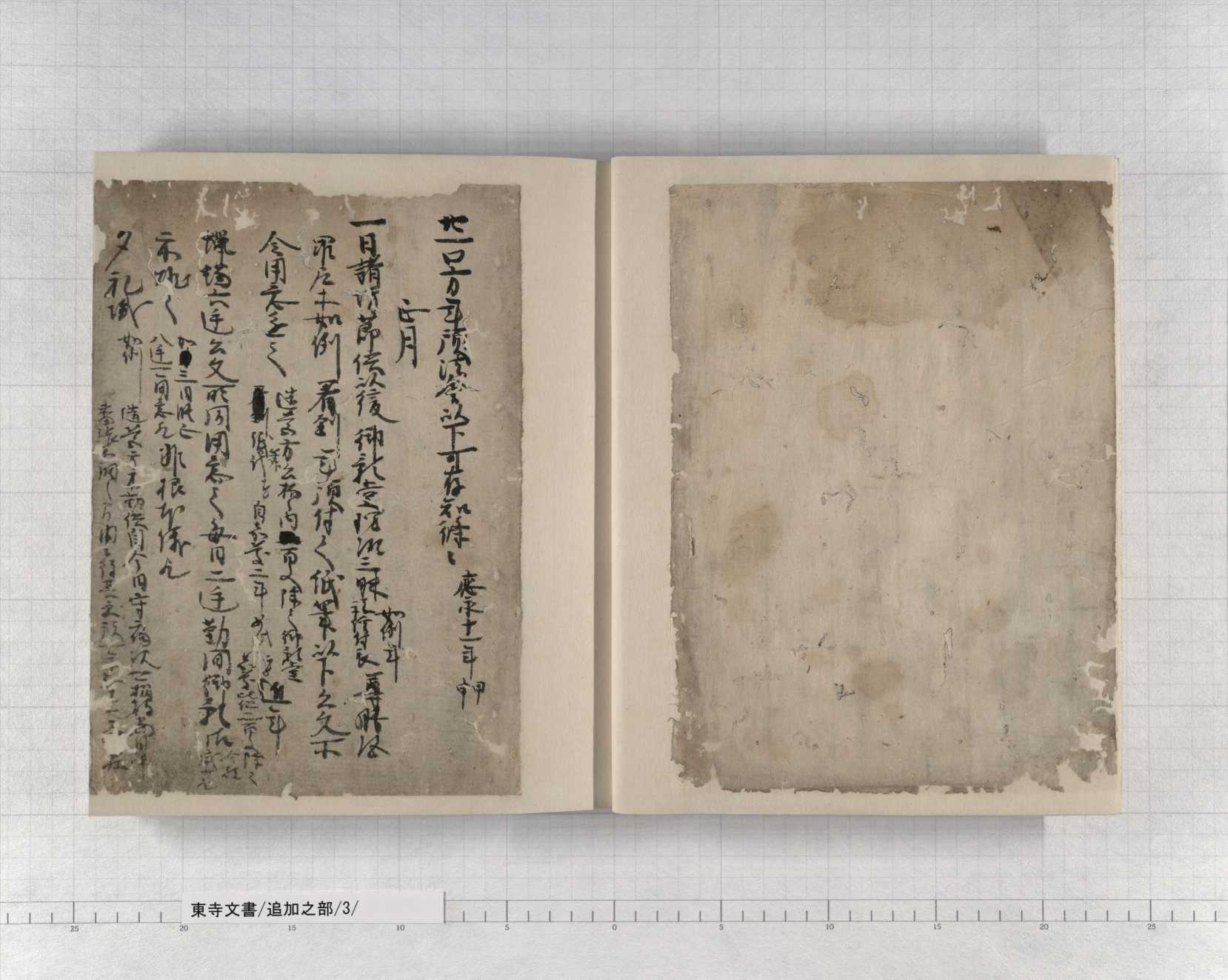Each monastic organization within Toji had a leader called nengyoji (年行事, also called bugyo “奉行” or nenyo “年預”.) The nengyoji was chosen from among kuso monks, the leading members of the organization, and assumed responsibility for operating the organization for a year.

The document above was privately written by Shojoko-in Kensai (清浄光院堅済), who was the nengyoji of Nijuikku-kata in 1404. The document provides detailed information about annual events held at Toji, which manor bore the expenses for the events, and programs for Buddhist services. Kensai probably drew up this document because he, as the nengyoji, was required to thoroughly know the situation of the organization.

Item (88) of Box-wo is a list of the contents of the tefumibako (手文箱) named “Sugibako” managed by the nengyoji of Chinju-kata. The list includes 22 folding books of hyojo-hikitsuke (評定引付, meeting minutes), seven documents and a folding book of denji-nayose-cho (an accounting book used when receiving land tax), and nine documents of sanyo-jo (an account book in which revenue and expenditure were calculated). The duties of the nengyoji were mostly related to organizing meetings and managing the temple-owned estates.
There was also a position called tsukigyoji (月行事), who was chosen monthly for a short period of time in the last years of the Kamakura period. Hyakugo Monjo includes journals and hyojo-hikitsuke (meeting minutes) written by tsukigyoji.
